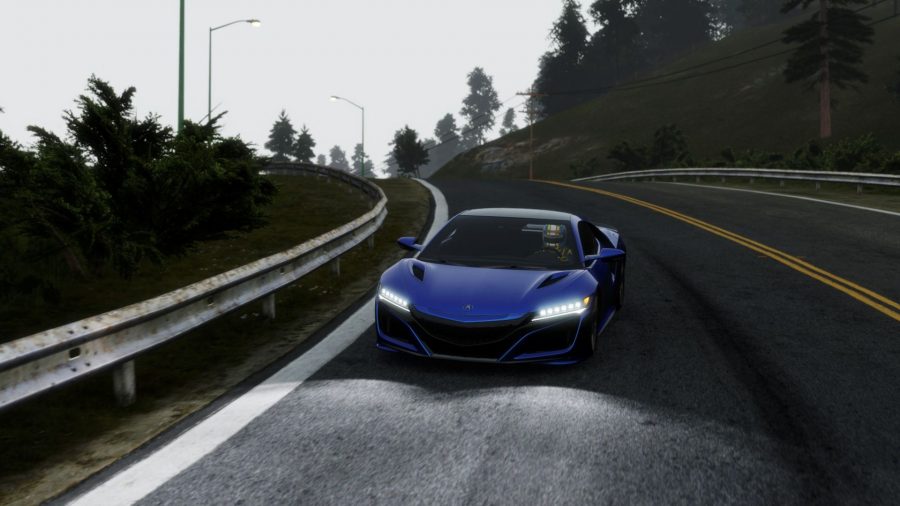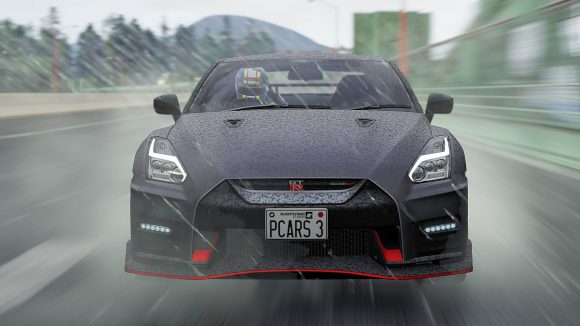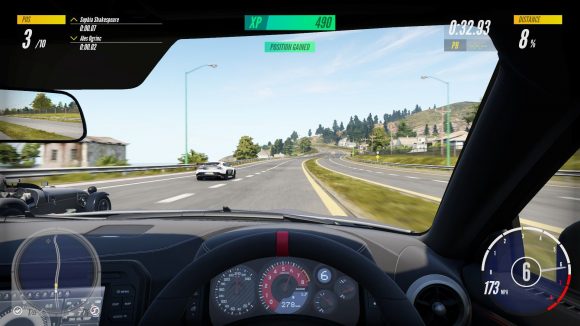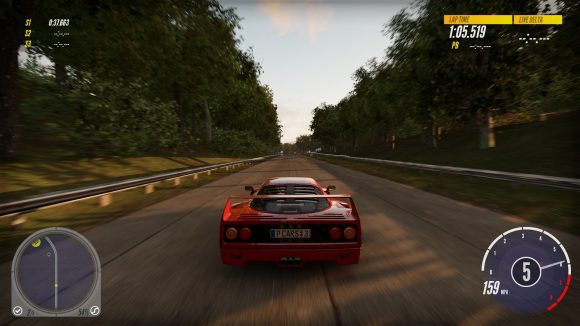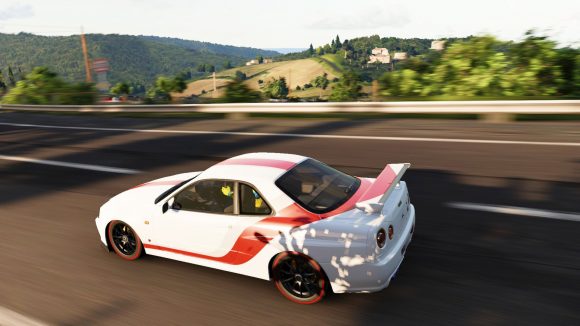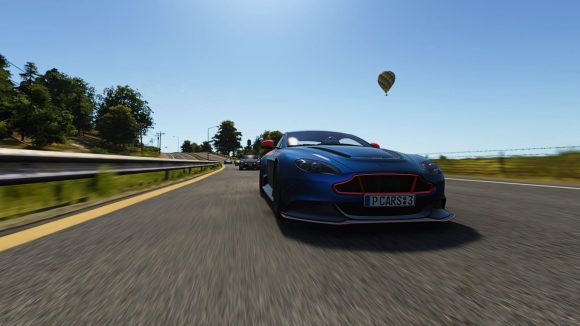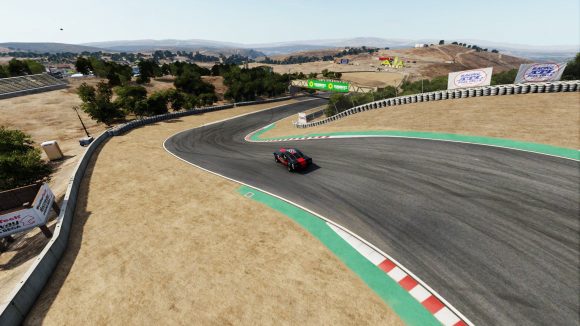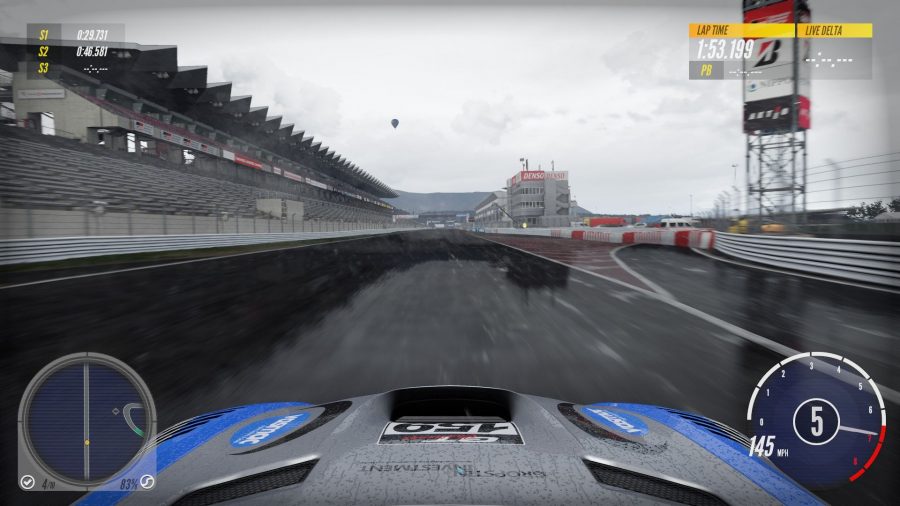Our Verdict
More-user friendly, more fun, but still boasting all of the bark and bite you'd expect from a top tier racing sim.
Project Cars 3 is a people-pleaser of a racing sim. This shouldn’t come as too much of a surprise given Slightly Mad Studios founder Ian Bell referred to the game as a ‘spiritual successor’ to Need for Speed: Shift, but it’s still a shock when the career mode immediately lets you select a sporty road car to start off with rather than presenting you with a po-faced selection of realistic racing leagues. You choose one of three starter cars, either the nimble Toyota GT86, a balanced 1999 Mitsubishi Lancer, or a relatively muscly Honda Civic Type R, and immediately get to work in the first vehicle class of career mode. For the record, if you don’t pick the 1999 Mitsubishi Lancer then you’re a narc.
Progression is rapid, with each vehicle class containing several championships to beat, and each championship netting you XP and cash to spend on vehicle upgrades, new cars, and unlocking even more racing events. If you don’t want to spend cash on unlocking new racing events then you can access them for free by completing racing challenges, which range from completing a set number of clean overtakes within the first sector of a lap, to mastering 75% of a given circuit’s corners. You’ll earn the majority of these without thinking about it, but occasionally you’ll have to head back to a specific event to complete a challenge, sometimes spending upwards of an hour fine-tuning your setup and upgrades so your car is perfectly kitted for the event. If that’s not your style then you can spend some of your winnings to circumvent the grind, but if you’re anything like me then you splurged those winnings on a new turbocharger hours ago.
Occasionally, these challenges can feel exhausting, especially when trying to beat the fastest hot lap time with a snarling, hulking slab of potential like the Aston Martin DB11. On a dry track it might feel doable, but during a torrential downpour guiding the 600 horsepower brute around an apex feels like pushing a rhinoceros on ice skates. Just finding traction feels like an insurmountable challenge as the tyres spin hopelessly away from a corner, the rev counter threatening to break through the dashboard, and as soon as you find yourself picking up some pace it’s time to gently – ever so gently – squeeze the brakes to avoid locking up and spinning out. But, when you finally nail the balancing act required to get the DB11’s immense power onto the tarmac everything clicks into place and you find yourself feathering the throttle like you’re keying Morse code.
Thankfully, there always seems to be an invitational or challenge event available that gives you a tantalising glimpse of what vehicles are waiting for you further into your career. Gliding over a snowy Knockhill circuit in a racing truck makes for a crisp reminder that the DB11 really isn’t that bad. Likewise, completing three laps of the Nürburgring’s Nordschleife circuit in a 1970’s formula one car feels like one long, protracted near-death experience – every hairpin bend, blind crest, and uneven concrete berm reducing you to a bundle of nerves and endorphins.
So, while you can’t leap into the highest echelons of racing straight away as in previous games in the series, Project Cars 3 constantly feeds you morsels of its best content to keep you tearing through the vehicle classes.
A brand new upgrades system lets you adapt your cars over time so you don’t have to buy a fresh set of wheels every time you move up a vehicle class, which encourages new players to get to know their cars a bit better and even mess around with tuning. It’s a simple, but robust solution where most upgrades offer flat performance upgrades to key areas like top speed, handling, acceleration, and braking, while also propelling your vehicle into new classes.
For the proper petrolheads, some upgrades also unlock additional tuning settings so you can adjust your spring rates, toe angles, and much more if you’re confident you won’t wreck your handling in the process. Testing this out on the DB11 – last time I will mention this car, promise – I was able to shave a couple of seconds off a lap time and gobble up another event challenge. I then used the cash to invest in better suspension, which finally let me get the cumbersome car around a corner without understeering and skittering off the chicane.
The upgrades and tuning settings encourage players to experiment with their vehicles by offering easy tuning presets to switch back to if things go wrong. There’s definitely room for improvement, with almost no explanation provided for what any of the individual settings do, and some settings like brake balance and weight distribution represented as a single percentage with no indication of whether you’re affecting the front or rear of the vehicle. But overall it feeds back into a well thought out and addictive progression loop that caters to the average racing game fan more than it does sim enthusiasts.
Similar comments can be made of Project Cars 3’s handling model. On the whole, this is a bone-shakingly convincing racing game that does a superb job of making you feel like you’re behind the wheel of its cars, especially at the lower racing classes where the differences between each vehicle are more drastic and easier to sense for non-professional racers, which I’m willing to bet accounts for 99.9% of the people reading this. Taking a ’66 Mustang through the iconic Laguna Seca corkscrew will make your stomach turn. You’ll feel the tail kick out as you exit, the orgasmic shudder of the suspension bouncing with the elevation change, and the momentary loss of control as you hurtle over the crest, tyres barely in contact with the tarmac beneath them. The sensation is totally different in the brand new Acura NSX, which instead of gliding over the corkscrew remains pinned to the tarmac with its superior grip and downforce.
Once you get into GT and formula cars however, spotting the difference between one or the other becomes a challenge in and of itself. They all feel fast, they stick to the road, and they have so much downforce you can full throttle the majority of any course. You’ll need to employ techniques like countersteering, drifting, drafting, feathering the brakes and throttle, and more to win, but there‘s a touch of looseness about the handling model that reveals itself in situations like locking up your brakes or nicking a wet chicane. You’ll definitely notice a momentary loss of control, but it doesn’t feel like there’s any follow-through when it comes to the rest of your car’s handling.
This is a minor, minor concern though, as in practically every other regard Project Cars 3 succeeds at making you feel like you’re behind the wheel of its myriad racers. Across its countless tracks and vehicles there are hundreds of hours of racing enjoyment to be had, whether that’s fawning over your prized ’90s Japanese street racer in photo mode, taking on historic challenges like the Indy 500, or bombing around the Tuscan hills in a vintage Ferrari, evening sun glinting of the Rosso Corsa paintwork.
More like this: Here are the best racing games on PC
With its revamped career mode, Project Cars 3 is easily the most accessible game in the series, and arguably the most approachable racing sim ever. That comes with a slight tradeoff in the granularity of its controls, but you’d be hard pressed to notice when you’re gunning around Monza’s Curva Grande, engine screaming, preparing to pass into first place from the outside.

